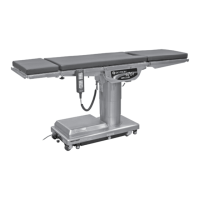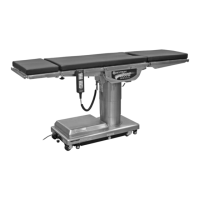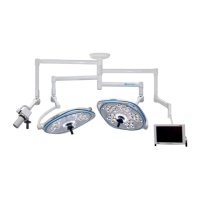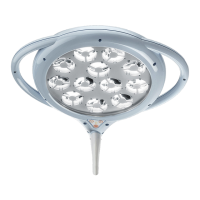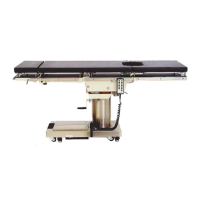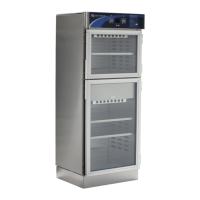Page 32
f. Test Results:
If you do not receive the correct meter readings, the
relay box or wiring is defective and should be
replaced.
NOTE
Before deciding the relay box is de-
fective, check the wires and pins in the
connector blocks to make sure they are
not loose or making a bad connection
with their mate.
5-5. Solenoids
The solenoids are energized by 120 volt potential
that is controlled by the relays located inside the
relay box.
The solenoid windings are protected from exces-
sive heat with an internal thermal fuse that will open
after approximately seven (7) minutes of continu-
ous operation. The solenoid must be replaced if the
internal thermal fuse has been blown. The sole-
noids are mounted directly on either side of the
hydraulic mini-valves and push the spool valve in
one direction or the other depending upon which
solenoid is activated.
a. Solenoid Test
The following tests check the voltage applied to the
solenoids and the resistance of the solenoid coil.
NOTE
If a solenoid does not function when the
pendant control button is pushed, the
problem could be the pendant control,
the relay box, or the solenoid.
NOTE
Each solenoid is controlled with 120V
source coming from the relay box. This
source can easily be checked by mea-
suring the voltage at the 2 pin connector
in question.
CAUTION
Line voltage will be measured in this
test. Do not touch uninsulated connec-
tor pins or meter test leads.
b. Step #1
1. Plug the table cord into the wall receptacle
and turn main switch ON.
2. Disconnect the 2 pin connector from the
solenoid in question. See figure 5-8.
3. Use a voltmeter capable of measuring 120
VAC and measure the voltage across the 2 pin
connector. Polarity of meter leads is not important.
NOTE
The appropriate pendant control but-
ton must be pushed during this test.
The motor will run when this test is
performed, and the brake locking sole-
noid will be activated by any function
other than UNLOCK if brakes are not
set.
c. Test Results:
If you do not receive the correct voltage, the prob-
lem could be in the wires leading to connectors
CN6, CN7A and CN7B. The problem could also be
in the relay box or the Pendant Control (refer to
appropriate section for troubleshooting).
If the correct voltage is obtained, everything is good
up to that point and the problem is more than likely
the solenoid.
d. Step #2
The solenoid can be checked out using an ohm-
meter R x 1 scale.
1. Measure the resistance between the two
pins of the connector in question. See figure 5-8.
Connector being tested must be disconnected.
Polarity of meter leads is not important.
2. The meter should read approximately 80-90
ohms at room temperature (58 ohms for tables S.N.
1997-4&L).
3. Measure the resistance between either pin
and solenoid housing.
4. Meter should read infinity.
3500
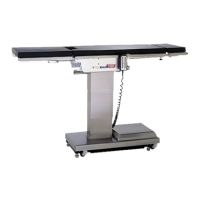
